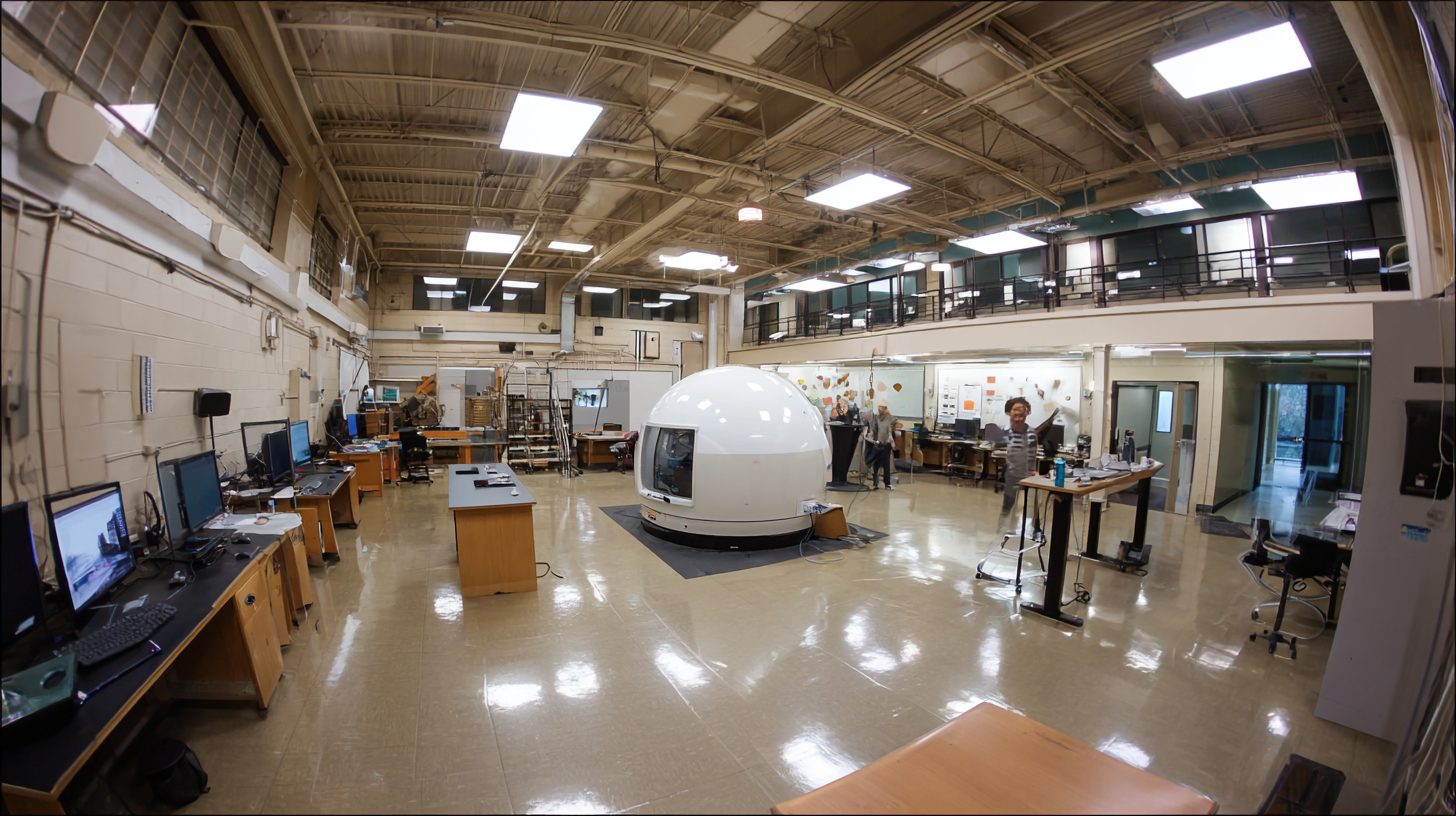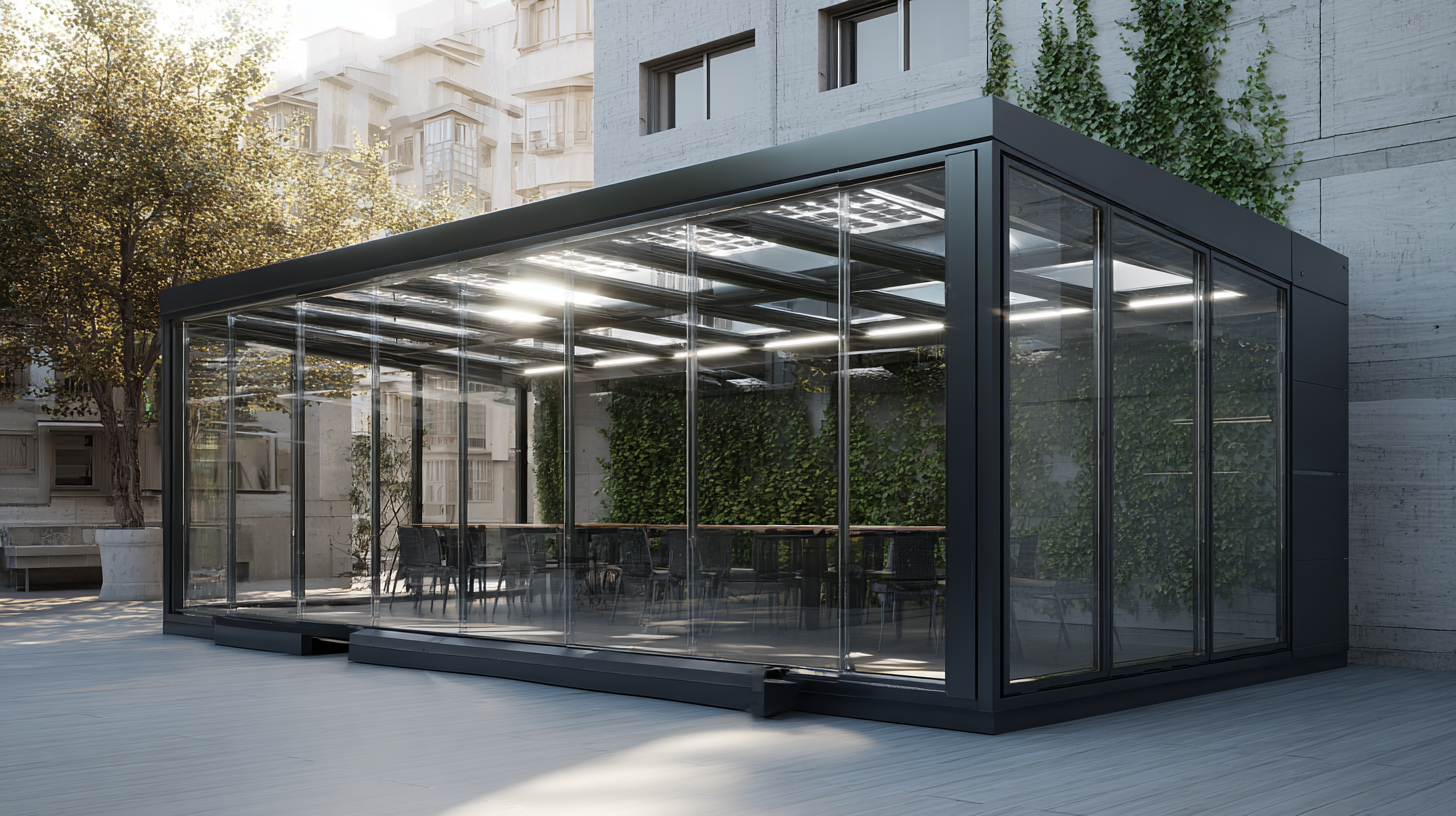
-
Home
-
Product Center
-
Application
-
Support
-
JT Cloud
-
About Us
-
Contact Us
Leave Your Message

In the realm of architectural design, the optimization of natural light and energy efficiency has become increasingly critical amid rising global energy demands. The Sun Simulator Heliodon stands out as a pivotal tool in this quest, enabling architects to rigorously assess sunlight patterns and their impacts on building performance. According to a report by the International Energy Agency, buildings account for approximately 40% of global energy consumption, underscoring the urgency for innovative design strategies that prioritize sustainability. By utilizing The Sun Simulator Heliodon, architects can accurately model sun exposure, allowing for informed decisions that enhance energy efficiency and thermal comfort. This approach not only meets contemporary environmental standards but also aligns with the growing emphasis on green building practices, promoting a future where architecture harmonizes with nature.

The Sun Simulator Heliodon stands out as an essential tool for architects seeking to enhance energy efficiency and optimize building design. By simulating solar movements throughout the year, this device allows architects to analyze how sunlight interacts with their projects. This understanding enables the design of spaces that maximize natural light, reduce energy consumption, and improve occupants' comfort. With its precision, the Heliodon provides invaluable insights into shading, glare control, and thermal performance, ultimately leading to more sustainable architectural solutions.
In contemporary architectural practices, the integration of advanced tools like the Sun Simulator Heliodon complements 3D modeling techniques employed by firms to attract and retain clients. By combining these technologies, architects can present solar analyses alongside detailed visualizations, giving clients a comprehensive understanding of how a design will perform over time. This results-driven approach not only highlights a firm's innovation but also showcases their commitment to energy efficiency and the responsible use of resources, which are increasingly important in today's environmentally conscious market.
| Aspect | Benefits | Impact on Design | Energy Efficiency |
|---|---|---|---|
| Daylight Simulation | Accurate representation of sunlight | Enhances visual comfort and spatial quality | Reduces artificial lighting needs |
| Solar Gain Analysis | Identifies optimal window placements | Promotes energy-efficient designs | Maximizes natural heating |
| Shadow Analysis | Evaluates the effect of shadows on spaces | Enhances outdoor and indoor usability | Improves thermal comfort in buildings |
| Energy Modeling | Provides data for accurate energy calculations | Informs design decisions effectively | Facilitates energy-efficient building certifications |
The use of solar analysis and simulation in architectural design has become increasingly vital as the demand for energy-efficient buildings grows.
 The Sun Simulator Heliodon stands out as a powerful tool that enables architects to explore how natural sunlight interacts with their designs.
By providing a realistic simulation of sunlight patterns throughout the year, it helps designers optimize their layouts for light, shadow, and thermal performance.
This not only enhances the aesthetic quality of buildings but also improves their energy efficiency.
The Sun Simulator Heliodon stands out as a powerful tool that enables architects to explore how natural sunlight interacts with their designs.
By providing a realistic simulation of sunlight patterns throughout the year, it helps designers optimize their layouts for light, shadow, and thermal performance.
This not only enhances the aesthetic quality of buildings but also improves their energy efficiency.
As the global market for Computer-Aided Engineering (CAE) is projected to reach a value of USD 7.072.3 million by 2025, with a compound annual growth rate of 7.9% expected to bring the total to USD 12,993.7 million by 2033, embracing such advanced technologies in architectural practice is becoming increasingly essential.
Utilizing tools like the Sun Simulator Heliodon, architects can make informed decisions that align with sustainable practices while meeting regulatory standards.
This integration of technology into design processes paves the way for innovative solutions that cater to both aesthetic and environmental considerations.
The accurate visualization of the sun's path is crucial for architectural design, directly impacting energy efficiency in buildings. The Sun Simulator Heliodon offers architects a powerful tool to simulate and analyze solar exposure throughout the year. By creating precise models of sun paths, designers can optimize natural lighting and minimize energy consumption for heating and cooling. This not only enhances occupant comfort but also leads to more sustainable building practices.
Using the Heliodon, architects can experiment with various design elements, such as window placements and overhangs, to determine their effects on sunlight penetration. This hands-on approach allows for immediate feedback, enabling architects to make informed decisions early in the design process. As a result, projects can achieve significant energy savings and lower operational costs, while also adhering to increasingly stringent environmental regulations. Ultimately, the integration of accurate sun path visualizations into architectural workflows fosters innovative designs that harmonize with the natural environment, promoting energy efficiency and occupant well-being.
Integrating the Sun Simulator Heliodon into sustainable design practices offers architects a powerful tool to enhance energy efficiency and optimize environmental performance. By simulating solar light and shadows precisely, Heliodon enables designers to visualize how buildings interact with natural light throughout different seasons and times of day. This integration not only promotes informed design decisions but also encourages the use of passive solar strategies, such as optimizing window placement and overhangs to maximize natural heating and reduce reliance on artificial lighting.
Furthermore, the Heliodon can assist in assessing the thermal performance of materials and the overall energy consumption of a building. By analyzing the solar gains and losses during the design phase, architects can implement strategies that minimize energy use while enhancing occupant comfort. This proactive approach aligns with sustainable design principles by addressing energy needs and reducing the carbon footprint of buildings. Ultimately, the incorporation of Heliodon into architectural processes fosters a deeper understanding of site-specific environmental conditions, paving the way for innovative designs that harmonize with nature while maintaining high functionality and aesthetic appeal.
The integration of sun simulation technology, such as the Heliodon, has proven to be a game-changer in architectural design by enhancing energy efficiency and optimizing natural light use in buildings. Numerous case studies highlight its effectiveness in various architectural projects. For instance, a project in a temperate climate demonstrated a 20% reduction in energy consumption through strategically placed windows that leveraged sunlight, as analyzed by the Heliodon's simulations. Such empirical evidence underscores the importance of considering solar paths in the early stages of design.

Moreover, innovative applications of Building Information Modeling (BIM) technology further bolster the effectiveness of sun simulation in architecture. In a recent report, the AEC industry predicted that BIM applications could improve project efficiency by up to 30%, enabling architects to create detailed models that consider sun exposure and shade impact from the outset. Another notable case involves the design of a solar-wind hybrid renewable energy system, where sun simulation aided in optimizing the layout for maximum energy production. These advancements not only foster sustainable designs but also set benchmarks for future architectural practices.





